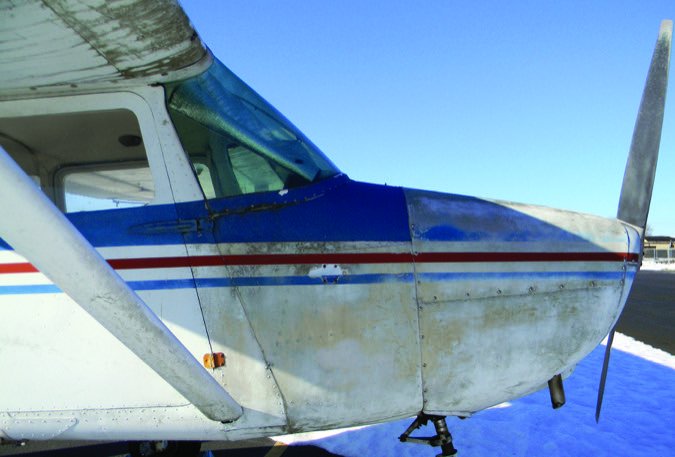
We’ve seen it plenty of times. It’s pretty easy to fool some airplane buyers into thinking the machine is a cherry by slapping on a fresh coat of paint and a spiffy interior. All is good until the airplane hits the hangar floor for the first annual inspection and the mechanic delivers the dreaded news: The airframe is corroded.
Truth is, even we’ll taken care of 30-plus-year-old aircraft will have varying degrees of corrosion, some of it in structurally critical areas. The exception might be planes that have spent all those years in a climate-controlled hangar and hardly ever flown. We’ve seen those, too, and they’re worth a premium.
The good news is there are some things owners can do to keep this airplane cancer from spreading deeper into the airframe, and with luck, keep it from forming in the first place. Here’s a common-sense primer, with a general overview of common types of corrosion and where you might spot it.
Corrosion 101
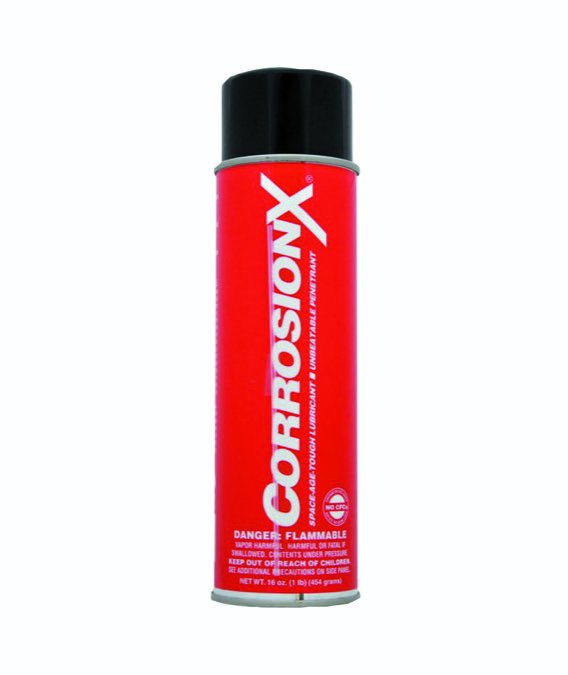
The best way to control corrosion is to keep it from forming in the first place, and understanding the requirements for building corrosion is the first step. Think back to high school science lab. First, there must be the presence of metal that will corrode-usually not a shortage on the typical aircraft. Sure, composite aircraft have an advantage, although many have metal wings and plenty of other metal accessories. There must also be the presence of a dissimilar conductive material that has less tendency to corrode. And, there has to be the presence of an electrolyte (water, for example). Then there’s the electrical contact between the cathode and anode-think metal-to-metal contact of a fastener, as an example. But remove any one of these basic requirements and you’re doing some good in controlling corrosion.
We all know corrosion when we see it, from the white powder-like substance you can swipe off the surface to red and black rust that has eaten through the metal. It’s all ugly, no thanks to the electromechanical deterioration of metal due to chemical reactions in the surrounding environment. Corrosion can spread quickly (or slowly) and for the purposes of maintaining an aircraft, it’s unquestionably the enemy because it eventually compromises the strength of the structure and control surfaces.
We also know that aircraft living in coastal regions (saltwater is the enemy) are more susceptible to rapid corrosion, but aircraft that operate in and are parked around industrial areas are equally susceptible.
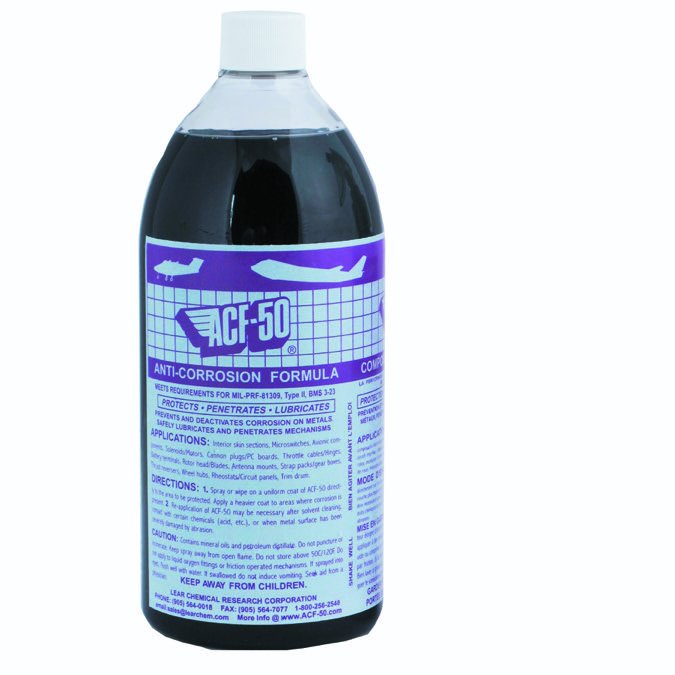
It’s complex because aircraft are made of several different lightweight metals that have an undesirable trait of a high electrode potential. This means that they are very reactive to any contaminants in the air, supporting the general rule that storing your bird in the right hangar is the way to go.
Like Cancer, There Are Many Forms Of Corrosion
Corrosion can take many forms, most of which are thought of as gradual processes. Multiple forms can be at work at the same time. Examples are surface-etch corrosion, pitting and exfoliation, which we’ll get to in a minute. But there are also forms of corrosion that can occur more rapidly, such as stress corrosion cracking, environmental hydrogen embrittlement and fatigue corrosion. These latter forms are influenced by both chemical and mechanical aspects of the environment and can cause catastrophic structural failures without a great deal of warning. Yes, as in a wing or tail coming off in flight. It happens.
A common type of gradual corrosion is oxidation, also known as atmospheric corrosion. Whenever a metal is exposed to a gas that contains oxygen atoms along with atmospheric moisture, a reaction occurs. Two atoms from the metal join with three atoms of oxygen to form an oxide. How serious is this type of corrosion? It depends on what type of metal is involved. When an aluminum surface is involved, the corrosion byproduct is aluminum oxide. When this layer is formed, it provides a penetrated barrier between the aluminum surface and oxygen elements. Keep in mind that even mild surface oxidation might mask a serious level of corrosion below.
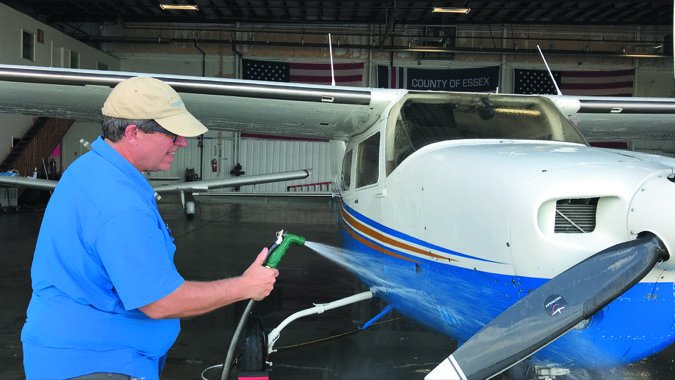
Never trust an oxide film to protect aircraft components from further deterioration. There is a form of oxide film that forms a tight bond with the surface of some metals and it creates what is called a passive film. Stainless steel and titanium are also examples of such metals. Once formed, further deterioration is stopped unless the film is broken. Unfortunately the film is all too flimsy to provide useful self-limiting.
Pure aluminum is very resistant to corrosion, but not strong enough to be used in any real structural capacity. It is used on sheet metal as a very thin coating called cladding, but it is easily broken through to the less corrosion-resistant structural component of the sheet. Scratch it or get a bit too aggressive with a buffing machine and you’ll penetrate the cladding.
When an iron surface is involved, the corrosion byproduct is iron oxide. That’s rust-and it never sleeps. The iron oxide forms a porous film that cannot seal out the oxygen. The reaction between the surface and the oxygen will continue until the metal is completely eaten away.
Surface-etch corrosion occurs when an unprotected metal surface is exposed to salt air, exhaust fumes or acidic fumes. You can spot this by looking for a uniform, dull appearance caused by microscopic amounts of salts being formed. If these salts are not removed and the surface is not treated to prevent further decay, this type of corrosion will reach the next level, known as pitting, which can be deceptively destructive. In its early stages, pitting makes its presence known by producing small clumps of white powder on the surface. You see it often on aging chrome vehicle wheels, among other places. In its later stages, it can be detected by using a small flashlight to shine light through the holes in the surface of the metal.
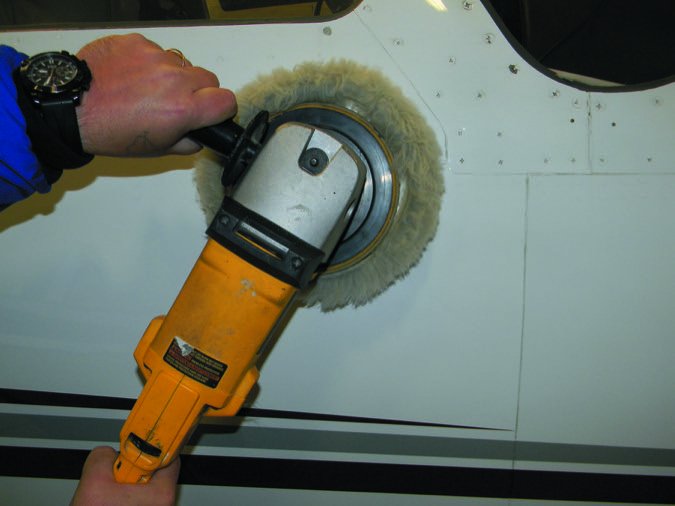
No metal is immune from the effects of cyclic stress with some corrosion tossed in the recipe. Fatigue corrosion occurs in two stages, starting with pitting and cracking and then progressing to a fracture.
How we’ll do you inspect-and we mean really inspect-the rivets on the skin? Smoking rivets doesn’t mean you’re the fastest Bonanza pilot in the West, it means you have fretting corrosion. It happens when two surfaces are held tightly together but can still move relative to one another, even ever so slightly. This allows the surfaces, and in some cases rivets and fasteners, to wear. These surfaces generally are not attached tightly enough to keep out oxygen. The oxide film is destroyed just as rapidly by the rubbing action of the two surfaces. If all that isn’t bad enough, when this type of corrosion is started, the movement between the surfaces is too small to allow the powdery deposits to escape, and they act as an abrasive to further accelerate the damage. In fact, this could be one of the worse types of corrosion, in our view, because the more the airplane flies, the faster it will spread. Beware of the smoking rivets.
Galvanic corrosion, also known as dissimilar metal corrosion, can occur any time two requirements are met: Two or more dissimilar metals must be connected in a manner that provides a path for the flow of electrons, and their common surfaces must be covered with a form of electrolyte. It can be easily recognized by the buildup of corrosion at the joint between metals.
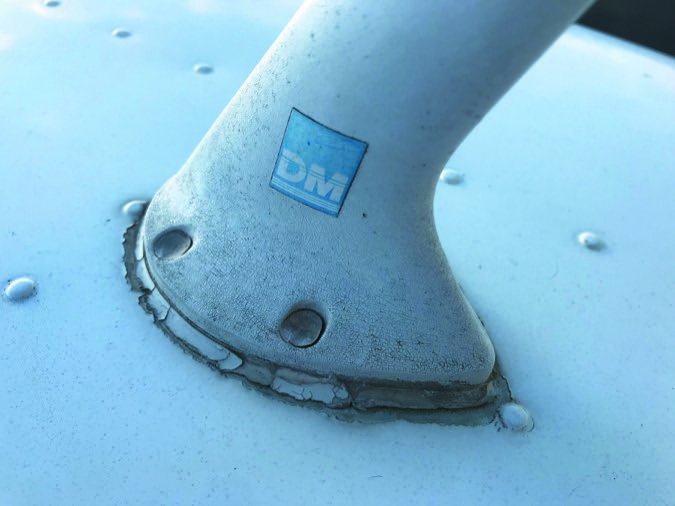
To see the process in action, the next time it rains go out and put your eyeballs on the wing. You’ll find steel screws attaching aluminum inspection panels to an aluminum wing covered with water. Another problem area is where a stainless steel firewall is riveted to an aluminum fuselage skin. Throw in a couple of minor exhaust leaks and some blow-by oil to help trap and hold dirt, and guess what’s next.
Another close relative of intergranular corrosion is stress corrosion cracking. It occurs when a metal under tensile stress is subjected to a corrosive environment, and may be caused by internal or external stress. As with intergranular corrosion, the stress can be caused by improper quenching after heat treatment, or uneven deformation during cold working. Parts that have an interference fit-such as the bushings in a landing-gear strut housing-can also cause it. Susceptibility to cracking increases with stress and if a crack does occur, it will grow rapidly because the corrosion attacks the end of the crack more so than the edges.
Treating Aging Metal
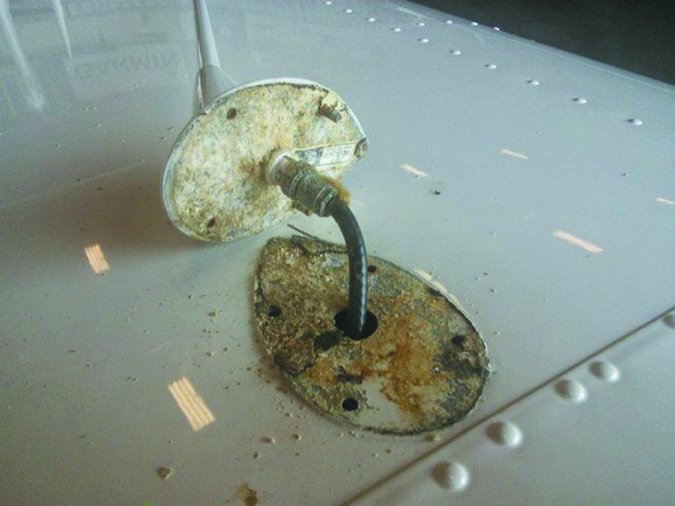
An aftermarket whole-airplane anti-corrosion treatment can be effective if it’s done thoroughly and regularly. Two common products, the Corrosion Technologies CorrosionX (www.corrosionx.com) and the Lear Chemical Research ACF-50 (www.learchem.com) fluid thin-film coatings (FTFC), have earned respect over the years as valuable tools for fighting the ongoing battle of airframe corrosion. We covered the products in a field report in the August 2016 Aviation Consumer, so we’ll lay down the basics here.
FTFCs are compounds that consist of complex molecules that have one end that attaches to metals and the other that blocks moisture and electrolytes. FTFCs are not like previous barrier products in that they do not remain on top of existing corrosion and keep further moisture out-they penetrate through existing corrosion to the metal.
Once there, the engineered molecules bond to the metal and often displace the existing corrosion to the point of falling off. This isn’t a repair for corrosion-induced damage, of course. The film penetrates into lapped skin surfaces and around rivets, and it does so remarkably quickly. It’s a messy job and done correctly, the skin weeps the oily film for some time. It’s important to treat the entire aircraft, not just the wings and tail. Cabin windows are notorious leakers and that water is a superb source of electrolytes to spur corrosion. That means pulling the interior and treating all of the fuselage. It doesn’t make for a pleasant-smelling aircraft, either. Smell the stuff once and your nose will forever sniff out planes that have been treated.
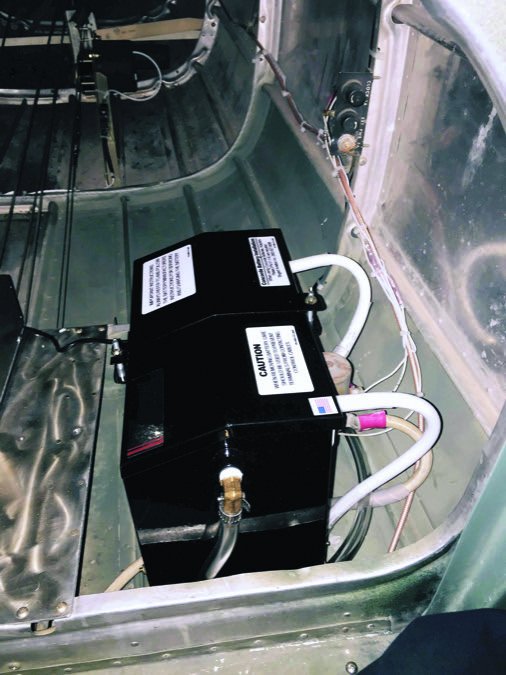
Whether and when to apply CorrosionX or ACF-50 depends on the age of the airplane and where it primarily flies. Over the last 15 years, manufacturing changes have meant that new airplanes come out of the factory with far superior corrosion-resistant treatments than previously.
We think if your airplane is older than 15 years and it has not had an FTFC treatment in at least five years, it would be wise to seriously consider fogging it at the next annual, especially in areas where corrosion is a way of life. Coastal New England is high on the risk list for its acidic rain and humidity, temperature swings and salt-laden air. The Gulf Coast and southern Atlantic coast also come to mind.
Still, just because your aircraft is based in a low humidity area such as central Colorado does not mean you can ignore the risk of corrosion on a legacy machine. Where your aircraft lived before you owned it has to be considered along with whether you ever fly to higher corrosion risk areas, such as the Midwest during a hot and humid summer day. When shopping for a used aircraft, find out exactly where it has lived. Some respected aircraft sales firms, like Aircraft Sales Inc. in Ohio (it performs the Pristine Airplane total refurbishment mods) won’t touch airplanes that have lived in corrosion-risk areas.
The shops we’ve talked with that do a fair amount of anti-corrosion treatments with both CorrosionX and ACF-50 recommend fogging the airframe at least every two years.
Roll Your Own Inspection Program
You can accomplish some of this on your own as you tinker with the machine in preparation for an annual inspection, or when doing some owner-performed preventive maintenance and repairs. But you have to know where to look. Start by talking with a trusted IA who is familiar with your model because chances are, he or she will have a general idea of where problem spots might exist in the airframe, and where you might look. As an example, interior sidewalls on Cessna models (the area where the black nylon/lead panels may touch the skins and the inboard wing spars on 210s and Cardinals) are problem areas. On Mooneys, it’s the area around the fuel drain and lower fuselage. Visit the hangar when the airplane is opened up for an annual-you’ll have a better lay of the land.
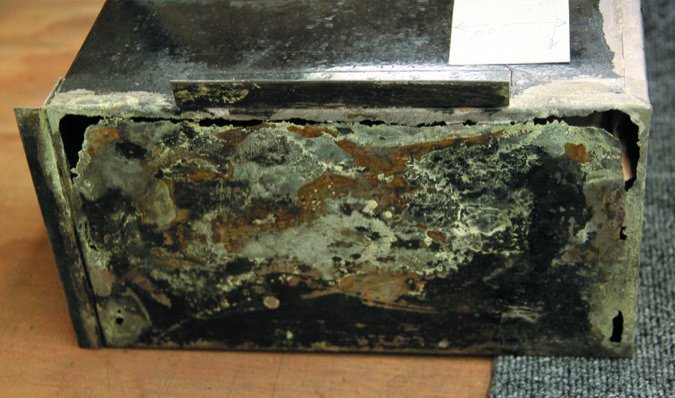
Worth mentioning is that some mechanics are more serious about inspecting for corrosion than others during routine annual inspections. While one tech might dig deep into the airframe specifically looking for signs of corrosion (we know of one trusted tech who climbs deep into the fuselage with a magnifying glass in one hand and a flashlight in the other), another might give the airframe a quick look and close it back up. Ask for as detailed an inspection as you’re willing to pay for.
For what it’s worth, we’ve seen some owners and mechanics make a case for too much inspection and disassembly that can end up doing more harm than good for obvious reasons. You need to find the right balance because face it, tearing an airplane down to its core can be a pricey and time-consuming job. Moreover, the regulations governing an annual inspection give the inspector a wide degree of latitude in how to dig for problems.
Last, when looking at well-worn used airplanes, make corrosion inspection high on the priority list during the prepurchase evaluation, and favor those that have been treated and stored indoors.
Tips For Taming Corrosion
– Discuss the level of routine inspection with your mechanic.
– Parking the aircraft in a climate-controlled hangar is best.
– But operating in industrially contaminated areas isn’t.
– Be gentle when cleaning the paint, especially with machines.
– Do not neglect aging antennas, pay attention to the sealant.
– Discuss anti-corrosion treatment intervals with your shop.
– Even hand-treating problem areas is better than nothing.
– Pass on used planes with serious corrosion. It’s a cancer.


